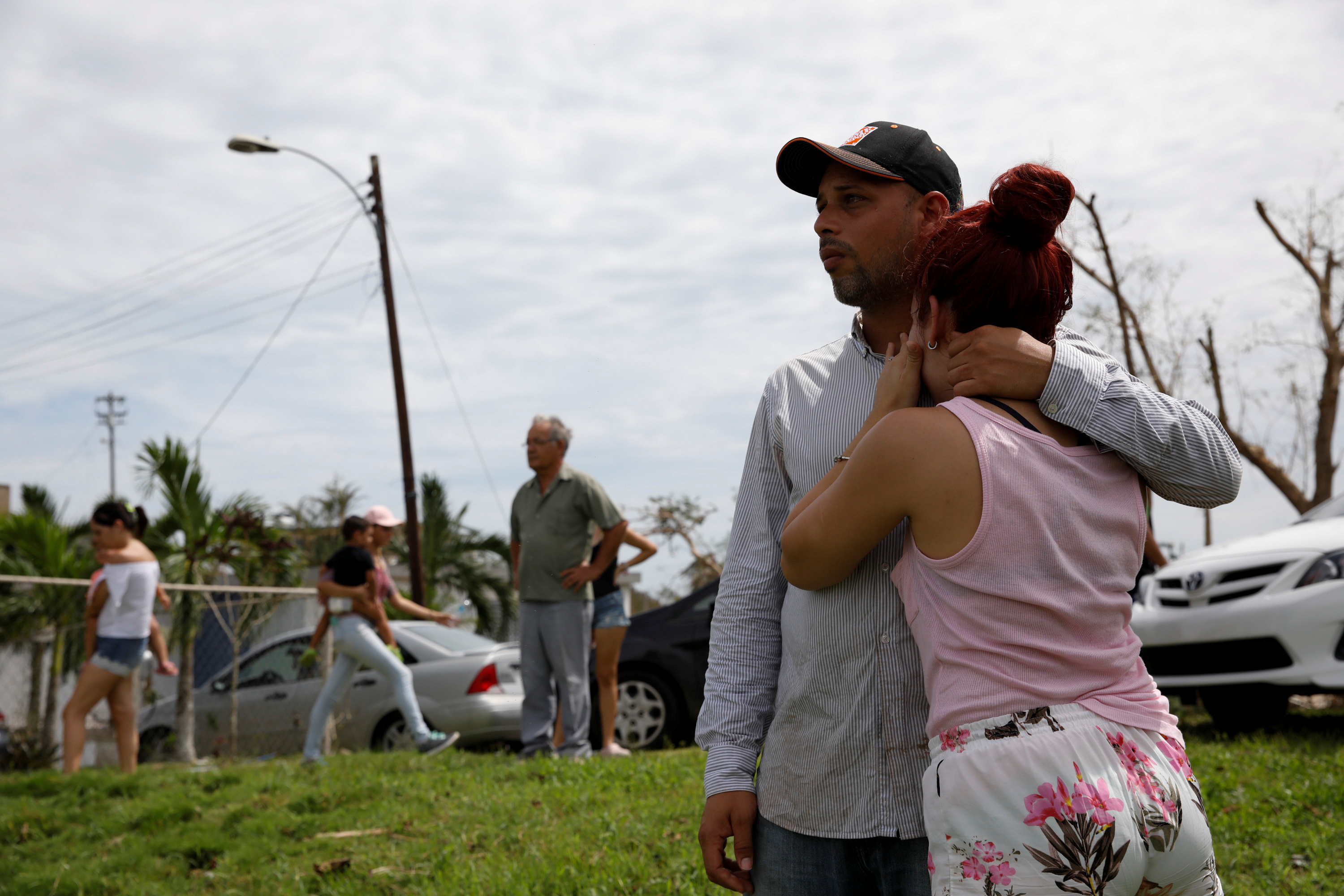
By Roberta Rampton and Gabriel Stargardter
SAN JUAN, Puerto Rico (Reuters) – U.S. President Donald Trump expressed satisfaction on Tuesday with the federal response to Hurricane Maria’s devastation of Puerto Rico, despite criticism that the government was slow to address the crisis.
Trump, who has grappled with hurricanes Harvey, Irma and Maria in the past six weeks, said at a briefing that the disasters were straining the U.S. budget.
“I hate to tell you, Puerto Rico, but you’ve thrown our budget a little out of whack because we’ve spent a lot of money on Puerto Rico,” he said. “And that’s fine. We’ve saved a lot of lives.”
Two weeks after it was hit by the worst hurricane in 90 years, many of Puerto Rico’s 3.4 million residents are still struggling without basic necessities. Shortly after Trump left Puerto Rico, Governor Ricardo Rosello said the death toll had risen from 16 to 34.
The U.S. territory’s economy already was in recession before Hurricane Maria and its government had filed for bankruptcy in the face of a $72 billion debt load. In an interview with Fox News, Trump said the island’s debt would have to be erased.
“They owe a lot of money to your friends on Wall Street and we’re going to have to wipe that out. You’re going to say goodbye to that, I don’t know if it’s Goldman Sachs but whoever it is you can wave goodbye to that,” Trump said in the interview, conducted while he visited the island.
Moody’s on Tuesday estimated Maria’s total cost to Puerto Rico, including lost output, at $45 billion to $95 billion and significant relief from the federal government would be required.
Trump said the federal response to Maria compared favorably with a “real catastrophe like Katrina,” the 2005 storm that swamped Louisiana and Mississippi and killed more than 1,800.
“What’s happened in terms of recovery, in terms of saving lives – 16 lives that’s a lot – but if you compare that to the thousands of people who died in other hurricanes that frankly were not nearly as severe,” he said.
The hurricane wiped out the island’s power grid, and fewer than half of residents have running water. It is still difficult for residents to get a cell phone signal or find fuel for their generators or cars. About 88 percent of cellphone sites are still out of service.
On Air Force One on his return flight to Washington, Trump said it had been a “great day” and he had heard no criticism during his day in Puerto Rico.
“We’ve only heard ‘thank yous’ from the people of Puerto Rico,” he said. “It is something I enjoyed very much today.”
He said local truck drivers are still needed to help distribute supplies.
‘STOP BLAMING’ PUERTO RICO
In Washington, Senate Democratic Leader Chuck Schumer said Republican President Trump should “stop blaming Puerto Rico for the storm that devastated their shores” and should start trying to make the situation better.
The White House is preparing to ask Congress for a $29 billion aid package for Puerto Rico and other areas hit by natural disasters, a White House official said, speaking on condition of anonymity.
Additional requests from the administration are expected for longer-term assistance to Puerto Rico, as well as Texas and Florida, which also were hit by powerful storms in recent weeks.
During his 4-1/2 hour visit to Puerto Rico, Trump’s motorcade sped past trees stripped of their leaves and the occasional home without a roof.
He and his wife, Melania, met survivors of the disaster in the town of Guaynabo, walking down a street and talking to several families whose homes were damaged. Sidewalks were piled with debris.
“You know who helped them? God helped them. Right?” Trump said.
San Juan Mayor Carmen Yulin Cruz, who has criticized the administration’s response to Puerto Rico, was among those Trump met with during his visit to the territory.
Days before, Trump lashed out at Cruz on Twitter, accusing her of “poor leadership” and saying that some people on the island “want everything to be done for them.”
Trump shook hands with Cruz but he saved his warm words of praise for other local and federal authorities.
“Right from the beginning, this governor did not play politics,” he said of Puerto Rico Governor Ricardo Rossello.
On CNN, Cruz said she told Trump, “This is about saving lives; it’s not about politics.”
Trump took a helicopter tour of the destruction, seeing hills that are normally lush and green, brown and bare after Maria’s winds stripped the branches. He also saw from the air the USNS Comfort, the just-arrived hospital ship.
Valentine Navarro, 26, a salesman in San Juan, shrugged off Trump’s trip as a public relations exercise.
“I think he’s coming here because of pressure, as a photo-op, but I don’t think he’s going to help more than he has already done – and that’s not much,” Navarro said.
(Additional reporting by Jeff Mason in Washington; Writing by Steve Holland and John Whitesides; Editing by Lisa Shumaker, Andrew Hay and Michael Perry)












